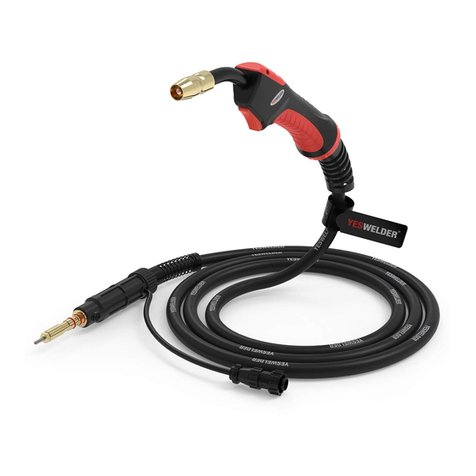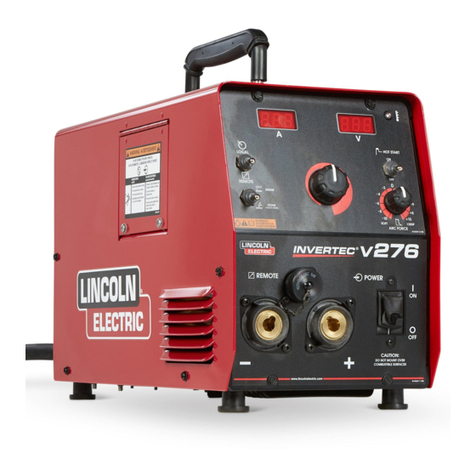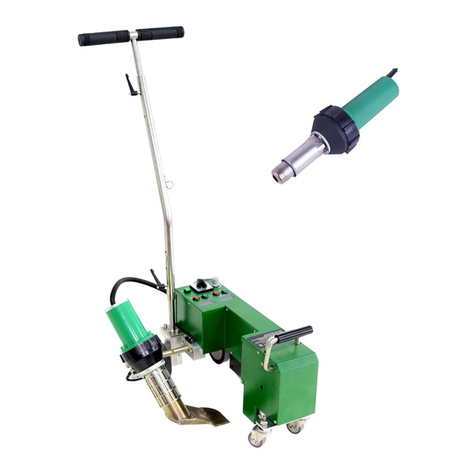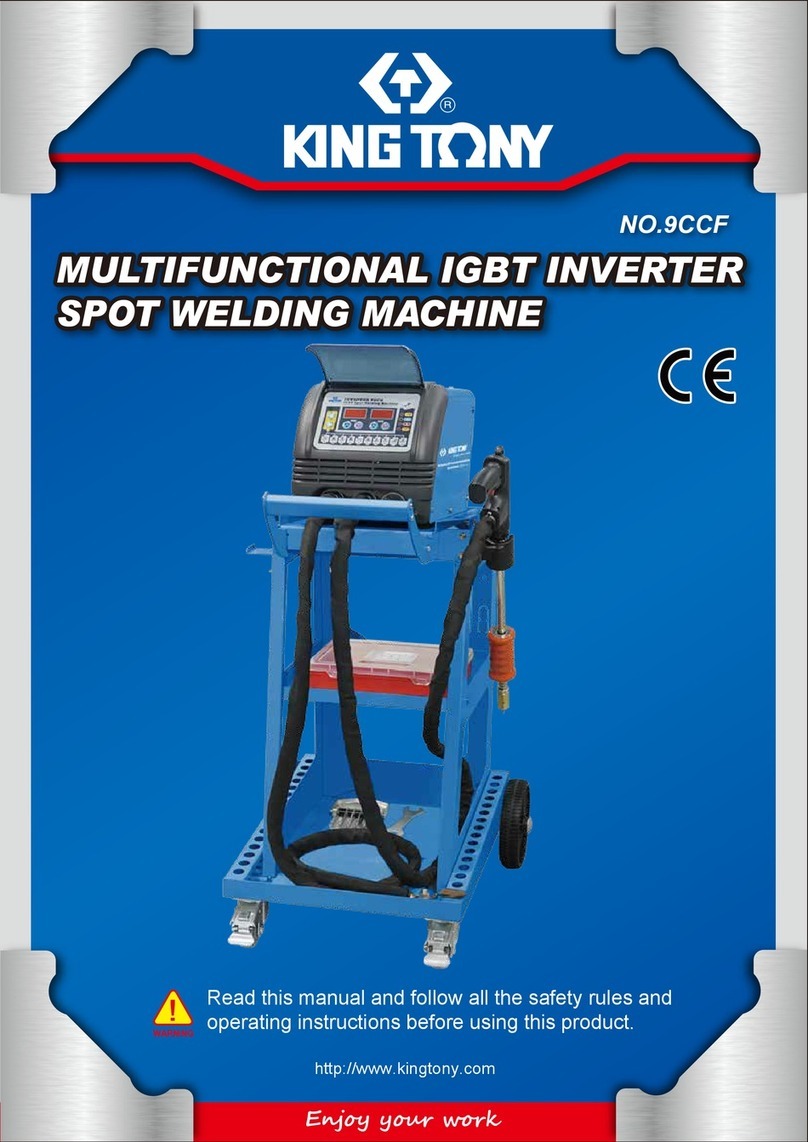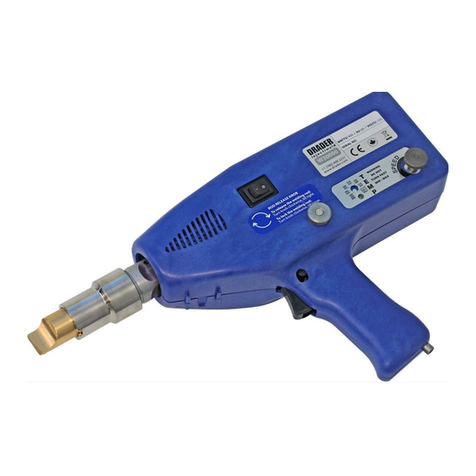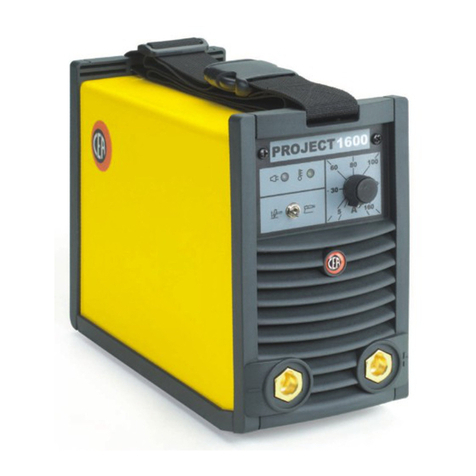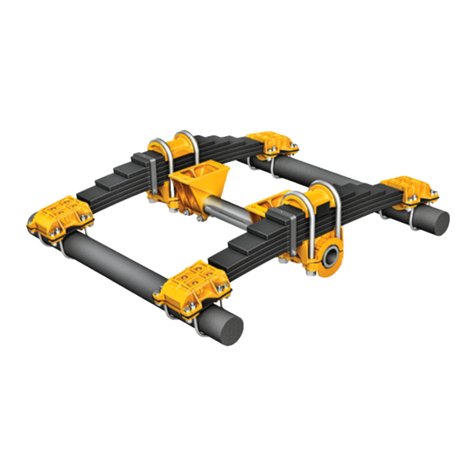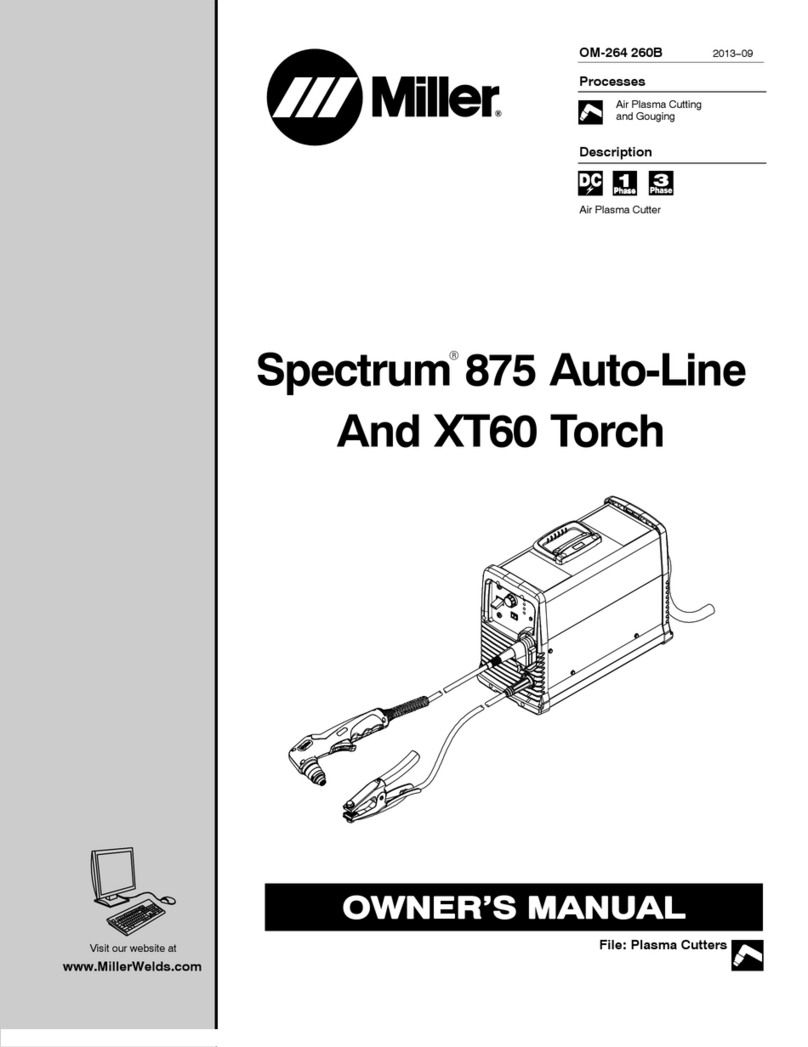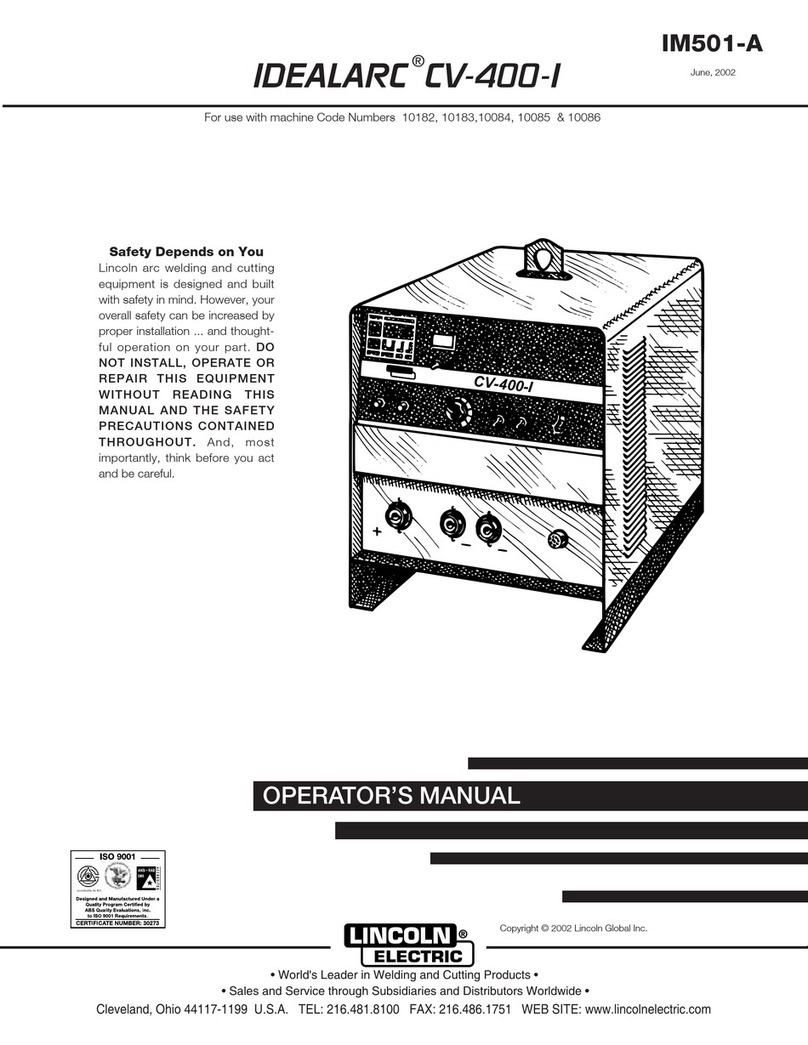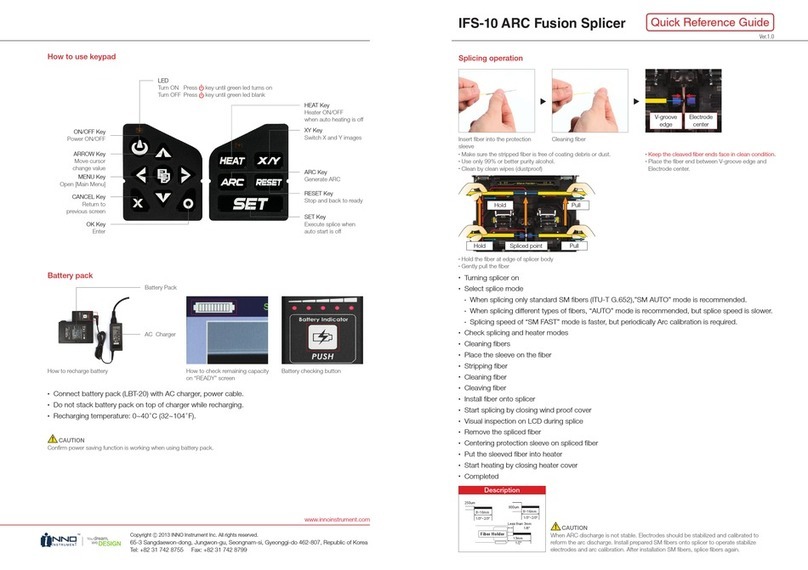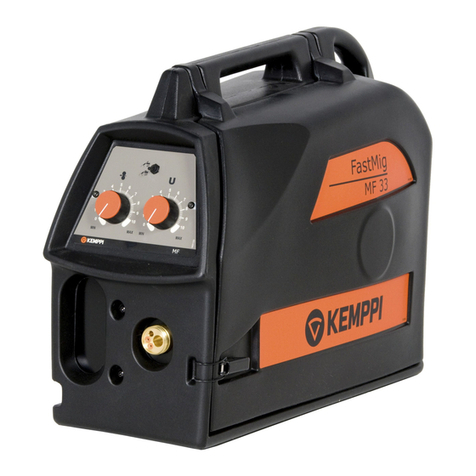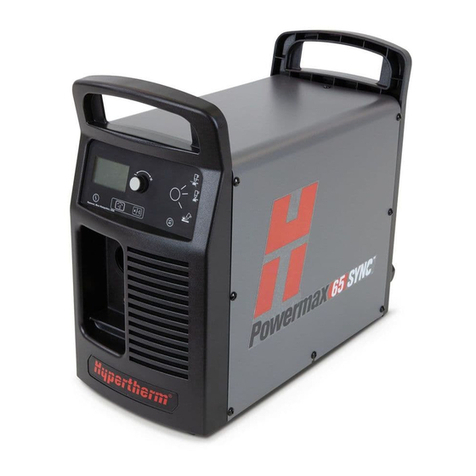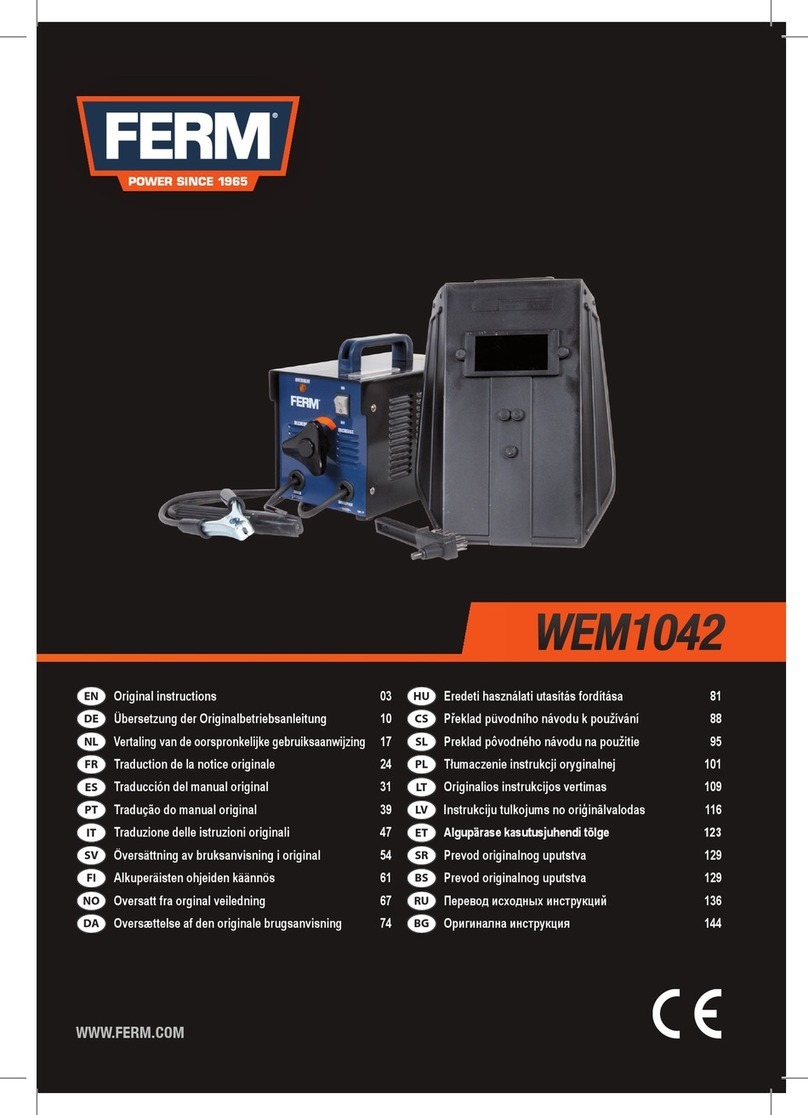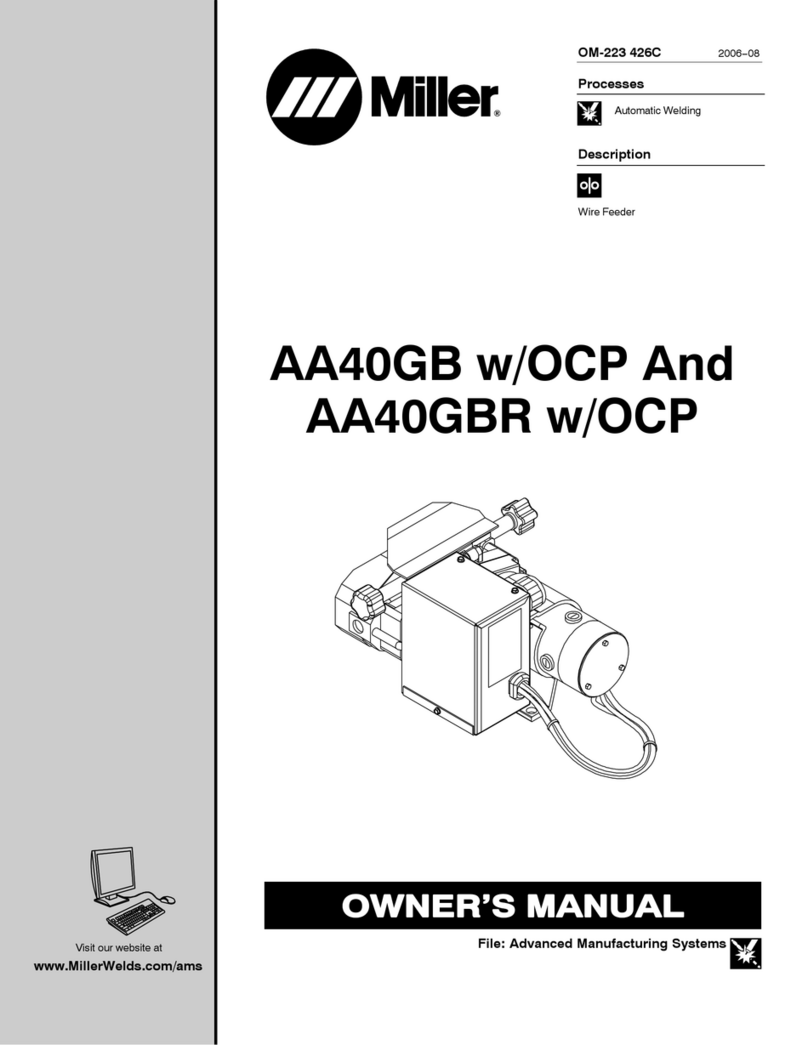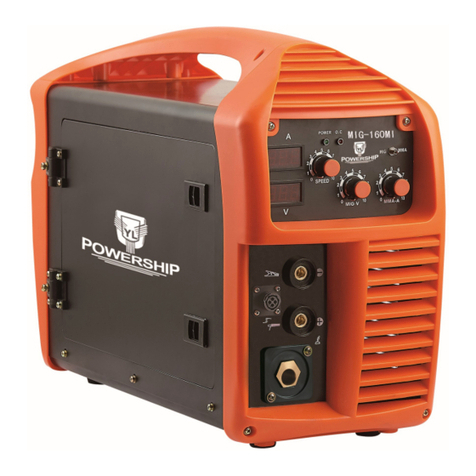PF Polymatic User manual

S c h w e i ß t e c h n o l o g i e G m b H
Ka r l - B r ö g e r -St r . 1 0 D E-3 6 3 0 4 A l s f e l d Te l : + 4 9 -6 6 3 1 -9 6 5 2 -0 F a x : + 4 9 -6 6 3 1 - 9 6 5 2 -5 2
Barcode Electro Fusion Control Box
Barcode Electro Fusion Control BoxBarcode Electro Fusion Control Box
Barcode Electro Fusion Control Box
PF
PF PF
PF –
––
– polymatic
polymatic polymatic
polymatic
PF
PF PF
PF –
––
– polymatic light
polymatic light polymatic light
polymatic light
PF-Schweißtechnologie GmbH – Karl-Bröger-Str. 10 – DE-36304 Alsfeld
Tel.: +49-(0)6631-9652-0 Fax.: +49-(0)6631-9652-52
Rev.: 2004-001-GB

Rev.: 2004-001-DE
2

Rev.: 2004-001-DE
3
Table of contents
1
Introduction .................................................................................... 4
1.1
Maintenance periods.............................................................................................................. 4
2
Scope of application and technical data ...................................... 5
2.1
Scope of application............................................................................................................... 5
2.2
Input of welding parameters................................................................................................... 5
2.3
Range of fitting dimensions.................................................................................................... 5
2.4
Technical data........................................................................................................................ 6
2.5
Technical File – Polymatic / Polymatic Light (ISO/FDIS 12176-2 ) ........................................ 7
3
Important safeguards..................................................................... 8
4
Controls and Plugs......................................................................... 9
5
Power Connection........................................................................ 10
5.1
Generator suitability ............................................................................................................. 11
6
Starting a welding process.......................................................... 11
6.1
Preparation........................................................................................................................... 11
6.2
Welding with the Barcode-Mode .......................................................................................... 13
6.3
FUSAMATIC
©
-Mode ............................................................................................................ 15
7
Other Functions............................................................................ 17
7.1
Function menu ..................................................................................................................... 17
7.2
Adjusting the display contrast............................................................................................... 17
7.3
System configuration / Change language ............................................................................ 18
8
Trouble shooting .......................................................................... 19
8.1
Using and servicing the reading pen.................................................................................... 19
8.2
Replacing Welding Terminals .............................................................................................. 19
8.3
Adapter................................................................................................................................. 19
8.4
Start messages .................................................................................................................... 20
8.5
Error messages.................................................................................................................... 21
9
Conformity Declaration ................................................................ 23
Please note the safeguards in chapter 3

Rev.: 2004-001-DE
4
1 Introduction
Dear customer,
we thank you for the confidence in our product and wish you a contented work with it.
The present instructions manual includes, beside the description of the use of the devices, important
notes for your safety and the scope of application. Therefore, you should read carefully the present
instructions manual before the first use of the device. In case of failure or interruption of the workflow
read the appropriate chapter of this manual. Self-evidently we are ready to assist you at any time:
PF-Schweißtechnologie GmbH
Karl-Bröger-Str. 10
DE-36304 Alsfeld
Tel.: +49-6631-9652-0
Fax: +49-6631-9652-52
All notes and technical specification in this instructions manual were prepared with all necessary care.
The manufacturer keeps the right to make technical changes at the device, which are not directly
included into the present instructions manual.
1.1 Maintenance periods
Please note, that the bought product is a technically demanding machine for field application. In
accordance to the applicable standards like DVS 2208-1, BGV A2, ISO 12176-2 and most national and
international standards, these machines have to be subjected to a periodical maintenance. The
maintenance period is 12 month. When the machine is used quite often the maintenance should be
carried out more often.
During the maintenance the machine will be upgraded to the current technical state. Additionally you
get a 3-month function guarantee for the maintained device.
The maintenance and the related checks are important for you safety and the continuous working
reliability of the control unit. Therefore the maintenance and all necessary repairs, have to be carried
out by the manufacturer or a authorised service point.

Rev.: 2004-001-DE
5
2 Scope of application and technical data
2.1 Scope of application
The electro fusion control units of type Polymatic / Polymatic Light are exclusively for the electro
fusion of thermoplastic pipes (e.g. made of PE-HD, PE80. PE100 or PP) by use of electro fusion
fittings with an welding voltage lower than 48V . The control units are conform to the standard DVS
2208-1 as well as the ISO 12176-2, which refer to the standards applicable for the electro fusion fittings
to be used.
It is not allowed to use the electro fusion controllers, to which the present instruction manual refers to,
for an application not covered by the above stated terms. The manufacturer is not liable for the use of
the machine out of the scope of application.
2.2 Input of welding parameters
The electro fusion controllers of type Polymatic / Polymatic Light provide the following means for
entering the welding parameters:
BARCODE (ISO-TR 13950, Type 2/5i, 24 digits)
The barcode attached on the most electro fusion fittings in the market contains all necessary data for
processing them. After reading the barcode with the reading device, the process data is automatically
taken over by the control unit. The barcodes contains mainly the following data: Manufacturer, type,
diameter, fusion voltage, fusion time (with temperature correction, if applicable), resistance and
resistance tolerance.
FUSAMATIC-System:
By reading out the reference resistance in the connector pins of the FUSAMATIC-Fitting the control
unit automatically takes over the welding data of the fitting.
2.3 Range of fitting dimensions
For which range of fitting dimensions a electro fusion control unit can be used depends essentially on
the power consumption to the used fittings itself. Since the power consumption of the fittings are
different for different fitting manufacturers, a general statement concerning this point is hardly to make.
In case of doubt, each single case has to be checked separately. For electro fusion control units of the
type Polymatic / Polymatic Light the following general statement can be made, with the assumption,
that all welding processes were made one after the other, i.e. that the control unit is able to cool down
during the preparation time of the next fitting:
Polymatic: Use for dimension 20-630mm without any limit.
Polymatic Light: Use for dimension 20-355mm without any limit.
For larger diameters there must be provided longer off-times to ensure a cooling down of the control
unit (Error message “Device too hot”). Before processing fittings in this dimension range, you have to
check that the welding current of the fitting does not exceed the maximum output current of the control
unit.
All above made statements refer to an ambient temperature of 20°C.

Rev.: 2004-001-DE
6
2.4 Technical data
Technical Data – Technische Daten
Polymatic Polymatic Light
ISO 12176-2 Class - Klassifizierung
P
2
4 U S
1
V A X P
2
3 U S
1
V A X
Input Voltage -Eingangsspannung
230V ~/AC, (185V-300V)
Input Current – Eingangsstrom
16A
Input Frequency - Eingangsfrequenz
50Hz (40-70Hz)
Output Voltage - Ausgangsspannung
8-48V
Output Current - Ausgangsstrom
80A (max.: 110A) 60A (max. 80 A)
Power Consumption - Leistungsaufnahme
3600VA 3200VA
Temperature Range -Arbeitstemperatur
-10°C - +50°C
Protection Class - Gerätesicherheit
IP54, Class 2
Weight incl. Cables - Gewicht inkl. Kabel
20kg 18kg
Main Supply Cable - Netzkabel
4,5 m (Euro-Plug – Euro-Stecker)
Welding Cable - Schweißkabel
5m (fixed – fest) 3m (fixed – fest)
Welding Terminals - Anschlußkontakt
4,0mm (opt. 4,7mm)
Display – Display
4 x 20 Characters (alphanum.), background lighting
4 x 20 Zeichen (alphanumerisch), Hintergrundbeleuchtung
Dimension – Abmessungen
440mm x 380mm x 320mm
Monitoring Functions -
Überwachungsfunktionen
Input – Eingang
Voltage / Current / Frequency
Spannung / Strom / Frequenz
Output – Ausgang
Voltage / Resistance / Contact / Short circuit / Current Monitoring
Spannung / Widerstand / Kontakt / Kurzschluß / Stromüberwachung
Other – Sonstige
System / Working Temperature / Service
System / Arbeitstemperatur / Wartung
Error Messages - Fehlermeldung
Plain Text / Acoustic Signal
Klartext im Display / Dauerwarnton
Enclosed Parts – Lieferumfang
Control Box, Transport Box, Adapter 4.0/4.7mm, Instructions Manual
Gerät, Transportbox, Adapter 4.7/4.0mm, Bedienungsanleitung
Technical Data for 110V Control Units
Technical Data – Technische Daten
Polymatic / Polymatic Light
Input Voltage -Eingangsspannung
110V ~/AC, (90V-150V)
Input Current - Eingangsstrom
40A
Input Frequency - Eingangsfrequenz
50Hz (40-70Hz)

Rev.: 2004-001-DE
7
2.5 Technical File – Polymatic / Polymatic Light (ISO/FDIS 12176-2 )
Classification
Machine Type Classification
Polymatic
P
2
4 U S
1
V A X
Polymatic light
P
2
3 U S
1
V A X
Simulation Curved at 24V (Output voltage)
Polymatic Polymatic Light
Duty Cycle at 100%, 60% and 30%
Polymatic Polymatic Light
10%
20%
30%
40%
50%
60%
70%
80%
90%
100%
1500W
2000W
2500W
3000W
3500W
4000W
Duty Cycle (ISO 12176-2) at
U
ref
=36V
10%
20%
30%
40%
50%
60%
70%
80%
90%
100%
1500W
2000W
2500W
3000W
3500W
Duty Cycle (ISO 12176-2) at
U
ref
=36V
Additional Information
Polymatic (Light)
Soft Start: 2sec ramped
Ambient Temperature Compensation: As stated in ISO/TR 13950
Fitting Temperature Compensation: No
Fusion Data Recorder: No

Rev.: 2004-001-DE
8
3 Important safeguards
Before turning on the welding device, please, read this operating instructions as well
as the relevant safety and processing directions carefully.
Warning! With the use of electric tools you have to note the following basic
safety direction to protect against electric shock, injury and fire.
1. Keep your working area in order !
Disorder involves a certain danger.
2. Consider the influence of environment !
Do not expose electro tools to rain. Do not use electro tools in wet or damp surroundings or in the
neighbourhood of combustible liquids or gases.
3. Protect yourself against electric shock !
Avoid body contact with grounded components (e.g. radiators, metal pipes) or live cables. Do not carry
the device, with the finger on the power switch. Pull out the plug when you do not use the tool or when
changing the adapters and attachments.
4. Keep unauthorized people and children away !
Do not allow other people touch the device or cables – keep them away from your working place.
5. Store up your device safely !
Unused machines should be kept in a dry and locked room, inaccessible for children and unauthorized
people.
6. Use permitted accessories only!
Do only use accessories, especially current sources and lengthening cables, that are stated in the
operating instructions or recommended by us. The use of attachments, that are not stated in the
operating instructions, involves a certain danger for you. Do only use permitted and marked
lengthening cables outdoors.
7. Do not expose the cables to avoidable loads !
Do not carry the machine with the cable and do not use the cable to pull out the plug. Protect the
cables against heat, oil and sharp edges.
8. Lock after your tools carefully !
Keep your device clean. Follow the servicing instructions and the instructions for changing the tools.
Keep oil and grease away from the straps.
9. Check your device for damages !
Check your tools before every use for damages and function of the protection devices and machine
parts. All parts have to be mounted in the right way. They have to fulfil all conditions for a impeccable
running of the tool. Damaged protection devices and machine parts have to be repaired or replaced by
an authorized service point.

Rev.: 2004-001-DE
9
4 Controls and Plugs
(1) Display
(2) START (green)
(3) STOP (red)
(4)
(5)
(6)
(7)
(4) Power Switch
(5) Welding Cable
(6) Cable Holder
(7) Power Supply Cable

Rev.: 2004-001-DE
10
5 Power Connection
The connecting conditions of EVU, the VDE-directions, the accident prevention
regulations, DIN/CEN-regulations as well as national regulations have to be
considered.
Electro Fusion Control Units have to be used by operators, which are trained and authorised conform
the national and international standards and directives, only. The operator has to supervise the electro
fusion control box during the whole fusion process.
The electro fusion control unit has to be used within the following ranges:
Parameter 230V Control Units 110V Control Units
Input Voltage: 185V – 300V (AC) 90V – 150V (AC)
Input Frequency:: 40Hz – 70Hz 40Hz – 70Hz
Ambient Temperature: -10°C – +50°C -10°C – +50°C
Max. Output Power: Polymatic: 4000W
Polymatic Light: 3600W
Polymatic: 4000W
Polymatic Light: 3600W
Caution: 110V Control Units shall not be used at 230V power supply and vice versa.
When operating on a electric distributor or the main power supply of nominal 230V, a min. 16 Amps
slow fuse comprising a residual current-operated protective device (RCCB) should be used (110V:
min. 32Amps).
Extension Cables:
To extend the power supply cable you have to follow the following rules:
Cable length Cross Section (230V) Cross Section (110V)
Up to 20m 3 x 1.5mm² 3 x 4mm²
20 to 50m 3 x 2.5mm² 3 x 4mm²
50-100m 3 x 4mm² -
It is not allowed to extend the welding cable!
Important notes for the use of generators:
•First start generator, then plug in the device.
•No other machine or device shall be connected to the generator
•The idle running voltage should be regulated to 240V – 260V (AC) at nominal 230V
(nominal 110V: 120V – 130V (AC)).
•Plug out welding device before turning off the generator.
•The usable generator power will decrease by 10% per 1000m height.
•Check the fuel lever before starting the welding process.

Rev.: 2004-001-DE
11
5.1 Generator suitability
The Electro Fusion Controllers of type Polymatic / Polymatic Light provide the following means to
increase the generator suitability:
•Wide tolerance for input voltage and Input frequency.
•Display of current input voltage and frequency.
•Soft-Start for limitation of the generator load.
Despite this characteristics, the generators to be used have to fulfil the following requirements and
recommends, in order to avoid damaged of the control unit and to ensure that the internal monitoring
function of the control unit will not interrupt the welding process:
•suitable to drive inductive loads and phase cut systems
•no-load voltage adjustable to 240V – 260V at nominal 230V (nominal 110V: 120V – 130V (AC)).
•output current of 18 Amps at one phase at nominal 230V (nominal 110V: 36Amps).
•stable output voltage and engine speed, also at fast alternating loads
•synchronous generators with mechanical speed control preferred
•voltage peaks must no exceed 800V
Min. required generator output power 230V, 50Hz, 1-phase
Diameter Output Power
20-75 mm 2kW
90-160 mm 3,2kW
180-710mm 4.5kW (mechanically controlled)
5kW (electronically controlled)
For generators with insufficient control performance or voltage control it has to be selected 3-3.5 times
higher output power than the stated ones to achieve an undisturbed operation. Electronically controlled
generators tent to oscillate with the control of the welding process, which can lead to high output
voltage peaks. Please, test suitability before using that kind of generators.
Manufactures like HONDA, EISEMANN, GEKO, FISCHER, PANDA and KIRSCH provide generators
performed especially for this kind of application.
Caution: 110V Control Units shall not be used at 230V power supply and vice versa.
6 Starting a welding process
6.1 Preparation
Before starting you have to carry out the following steps in the given order:
1. Check the device, cables and adapters visually. If necessary you have to replace them.
2. Plug in Detachable welding cables.
3. Unroll welding, power and extension cables completely.
4. Switch of the Power Switch of the control unit.
5. Start the generator before you plug in the control unit. Wait until the generator
output voltage has stabilized.
6. Plug in the power cable of the control unit.
7. Switch on the power switch.

Rev.: 2004-001-DE
12
Caution: 110V Control Units shall not be used at 230V power supply and vice versa.
After this procedure, the control unit signals its readiness with two bleeps. In addition the display
backlight is turned on automatically. The following display message appears:
PF polymatic
Version 2.04ah
25 Working hours
Line 1 and 2 show the type and version of the control unit.
Line 3 shows the total amount of working hours of the control unit.
If there occurred any error or change of the system configuration at the last weld before turning off the
device, this will be indicated by a message in the display once again. After pressing the red STOP-key
you are able to carry out a new welding process.
As long as no fitting is connected, no welding process can be started. The Message No contact
prompts you to connect a fitting.
Connect Fitting
Voltage: 230 V
Frequency: 50 Hz
No contact
Welding Terminals:
-The contacts of the welding connector and the fitting plug must be clean – dirty or coated
contacts can lead to overheating and burn at the connectors.
-Generally the terminals have to be protected against dirt. If there is a coating or loss of
stick force on the connectors they have to be replaced.
-Use Adapters to connect certain fitting types. Adapters wear out with the time and have to
be checked before every use.
Connect the welding terminals of the control unit to the pins of the fitting. Take care on a firm and
proper fit.
FUSAMATIC-System
The welding with the FUSAMATIC
©
-Mode is only possible with FUSAMATIC
©
-fittings. The Option
FUSAMATIC of the system configuration has to be enabled. The red terminal must be put on the
fitting pin which is marked with the red ring.

Rev.: 2004-001-DE
13
6.2 Welding with the Barcode-Mode
Pay attention to the installation instructions of the fitting, special instructions (ISO,
CEN, DVGW, DVS), European and national directions as well as the instructions of
the manufacturers!
After preparing and connecting the fitting, the following message demands you to read in a fitting
barcode with the scanner or reading pen:
Fitting code
Voltage: 230 V
Frequency: 50 Hz
Temperature: +23V
Error messages will be shown in the last row. In case of generator use check that the voltage is at
about 240-260V at nominal 230V (nominal 110V: 120V – 130V (AC)).
For welding in the Barcode-Mode, read in the barcode label, which is attached to the fitting you want to
process. If it is not readable because of damage, you can use by the way of exception the readable
barcode of an identical fitting of the same manufacturer. In any case it is forbidden to use the
barcode of a different fitting. If you read in a barcode which is defect or invalid the error will be
displayed and indicated by a bleep. You read in the barcode by using the scanner or reading pen.
Using the reading pen:
Place the tip of the reading pen left or right beside the bar code. Move the reading pen with a constant
speed over the whole barcode. Do not stop the movement or lift the reading pen off.
You read-in the barcode by using the scanner or reading pen. If the device detects a valid barcode, it
indicates its readiness by showing the following message:
Start
Nom. time: 0200s
+PF+ [d063 +23°C
Row 1 indicates that you have to press the green START-key to start the welding process. Before that
you are obliged to check and compare the shown values with the ones given on the connected coupler.
Row 2 shows the nominal welding time.
Row 3 shows the manufacturer, type and diameter decoded from the barcode. The type information is
shown like follows:
ICoupler TTee
]End cap YReducer
.†. Saddle >Ray Trans
(Elbow לTWD Tapping Saddle
There is also given the ambient temperature. If the fitting barcode provides temperature compensation,
the nominal fusion time will be adapted to the ambient temperature.
Row 4 shows possible error messages.

Rev.: 2004-001-DE
14
After pressing the green START-key a message will remind you of your duty to fix and prepare the
pipes according to the general guidelines:
Is the pipe scraped ?
If you have any doubt about the right preparation, you can break off the procedure by actuating the red
STOP-key. Confirm the proper preparation by pressing the green START-key.
Resistor Error
Now, the welding device begins to measure the fitting resistance. In the case that it is outside the valid
range, the error will be indicated by a bleep and a appropriate message will appear in the display:
1,68< 2,00 < 1,93
Nom. time: 200 s
+PF+ [ d063
Resistor error
Row 1 shows in the middle the measured resistance. At the left and right the borders of the resistance
range given in the barcode is shown.
Row 2 shows the nominal welding time.
Row 3 shows the report number of the faulty process.
Plug the welding terminals out of fitting plugs. Check the connectors of the fitting and welding cable for
dirt or coating. If the fitting causes another resistor error, it maybe defect. Replace it.
If no resistor error occurs, the welding device starts the welding process automatically. To avoid
danger for your health, do not touch the fitting or cables during the welding process. The
display shows the actual and nominal welding time:
Act. time: 0099 s
Nom. time: 0200 s
+PF+ [ d063
Row 1 shows the actual welding time, which is counted upwards.
Row 2 shows the nominal welding time.
Row 3 shows the manufacturer, type and diameter.
Row 4 shows possible error messages.

Rev.: 2004-001-DE
15
The welding process will stop automatically when the actual time reaches the nominal time. This will be
indicated by two bleeps and the following message:
Act. time: 0200s
Nom. time: 0200s
+PF+ [d063 20°C
+ OK +
Pull off the welding connectors to go back to the start message.
6.3 FUSAMATIC
©
-Mode
Pay attention to the installation instructions of the fitting, special instructions (ISO,
CEN, DVGW, DVS), European and national directions as well as the instructions of
the manufacturers!
The welding with the FUSAMATIC
©
-Mode is only possible with FUSAMATIC
©
-fittings.
As long as no fitting is connected, no welding process can be started. When connecting the welding
terminals to the pin at the fitting pay attention to a firm a proper fit. Connect the red welding terminal
to the fitting connector with the red marking. Thus the welding device can detect the fitting type
and its welding parameters. It will switch to the FUSAMATIC
©
-Mode automatically. This will be
indicated by the following message:
START
Nom. time: 200 s
FUSA 40V 20°C
Row 1 indicates that you have to press the green START-key to start the welding process. Before that
you are obliged to check and compare the shown values with the ones given on the connected coupler.
In the case that these deviate or if a contact error is indicated in the lowest row of the display, a faulty
or invalid reference resistance is read. Pull off the welding connector from the fitting plugs. Check the
connectors of the fitting and welding cable for dirt or coating. If the fitting causes another contact error
or differing parameters, it is defect. Replace it.
Row 2 shows the nominal welding time.
Row 3 shows the manufacturer FUSA and 40V to indicate the FUSAMATIC
©
mode and the ambient
temperature.
Row 4 shows possible error messages.

Rev.: 2004-001-DE
16
You can confirm the correctness of the welding parameters by pressing the green START-key. The
following message will remind you of your duty to fix and prepare the pipes according to the general
guidelines:
Is the pipe scraped?
If you have any doubt about the right preparation, you can break off the procedure by actuating the red
STOP-key.
Confirm the proper preparation by pressing the green START-key.
The welding device starts the welding process automatically. To avoid danger for your health, do
not touch the fitting or cables during the welding process. The display shows the actual and
nominal welding time:
Act. time: 0099 s
Nom. time: 0200 s
PLAS 40V
Row 1 shows the actual welding time, which is counted upwards.
Row 2 shows the nominal welding time.
Row 3 shows the manufacturer PLAS and 40V to indicate the FUSAMATIC
©
mode
Row 4 shows possible error messages.
The welding process will stop automatically when the actual time reaches the nominal time. This will be
indicated by two bleeps and the following message:
Act. time: 0200 s
Nom. time: 0200 s
PLAS 40V
+OK+
Pull off the welding connectors to go back to the start message.

Rev.: 2004-001-DE
17
7 Other Functions
7.1 Function menu
After connecting the control unit to the power supply and switching on, wait until the machine indicates
it readiness by two bleeps . Then aboard all error messages by pressing the red STOP-button.
by simultaneous pressing of the START and STOP-key the following two menu items will be shown in
the display:
>Contrast
System config.
> (Cursor) Marks the active menu item.
START (short) Moves the cursor upwards.
STOP (short) Moves the cursor downwards.
START (3 sec.) Selects the marked menu item.
STOP (3 sec.) Cancels the function menu.
7.2 Adjusting the display contrast
By selecting the contrast function of the function menu you can adjust the display contrast to your
needs:
Contrast
240
The shown value is only given for your orientation. It can show numbers from 100 to 250. At high
values the belong to strong contrast.
START (short) Increases the display contrast.
STOP (short) Decrease the display contrast.
START (3 sec.) Accepts the shown display contrast.
STOP (3 sec.) Cancels the function.

Rev.: 2004-001-DE
18
7.3 System configuration / Change language
To show the system configuration menu, you have to select the System config. function:
Language GB <
To change the display language press START (short).
After selecting the language function from the system configuration menu the display will show a list of
language indicators.
>GB
SE
ES
The indicators stand for: GB = English, SE = Swedish, ES = Spanish, IT = Italian, DK = Danish, PT =
Portuguese, DE = German, FR = French, PL = Polish, TR = Turkish, RO = Romanian, etc. Please
note that only 7 languages are available.
START (short) Moves the cursor upwards.
STOP (short) Moves the cursor downwards.
START (3 sec.) Selects the marked language item.
STOP (3 sec.) Cancels the language menu.

Rev.: 2004-001-DE
19
8 Trouble shooting
8.1 Using and servicing the reading pen
Attention: Do not touch the contacts of the welding cable with the reading pen.
Using the reading pen:
Place the tip of the reading pen left or right beside the bar code. Move the reading pen with a constant
speed over the whole barcode. Do not stop the movement or lift the reading pen off.
Replace reading pen:
If the reading pen does not works properly you can replace it on your own. Slit open the shirk tube
which protects the plug with a sharp knife. Pay attention on the cables. Replace the reading pen and
test it before you mount the new shirk tube.
8.2 Replacing Welding Terminals
The welding plugs should be checked frequently. If necessary they can easily replace in no time.
1. Switch off the device and disconnect it from the mains supply or generator!
2. Slip off the PVC-cap over the welding terminal.
3. Hold the front part of the brass contact with a pipe wrench and screw the welding terminal with a 8mm-
wrench out of the brass contact.
4. The red welding cable has to be equipped by a welding terminal with detection tip! You have to use welding
terminals that are delivered by PF only!
5. Screw the new welding terminal tight into the brass contact and slip the PVC-cap over the welding terminal.
Pay attention, that the PVC-cap is slipped over so far, that the welding terminal is left blank for about 15mm.
1_0200_001 Welding Terminal 4.7mm, standard
1_0200_003 Welding Terminal 4.0mm, standard
2_0200_003 Welding Terminal 4.7mm, Fusamatic (with detection tip)
2_0200_004 Welding Terminal 4.0mm, Fusamatic (with detection tip)
1_0410_004 PVC-Cap, red
1_0410_003 PVC-Cap, black
8.3 Adapter
For different fitting types different adapters are needed. In the following table you will find a selection of
available adapters:
1_0300_009 Adapter 4.7/4.7 angle
1_0300_001 Adapter 4.7/4.0 angle
1_0300_004 Adapter 4.0/4.7 angle
1_0300_011 Adapter 4.0/4.0 angle
1_0200_005 FUSAMATIC-Adapter 4.7/4.7
1_0200_006 FUSAMATIC-Adapter 4.7/4.0
1_0200_007 FUSAMATIC-Adapter 4.0/4.7
1_0300_010 Adapter 4.0/4.7, straight
1_0300_003 Adapter 4.7/GF (lose ends)
1_0300_014 Adapter 4.0/GF (lose ends)
1_0300_002 Adapter 4.7/FF-flat
1_0300_012 Adapter 4.0/FF-flat
1_0300_008 Adapter 4.7/FF-pin
1_0300_013 Adapter 4.0/FF-pin

Rev.: 2004-001-DE
20
8.4 Start messages
After switching on the device the following message appears on the display:
PF Polymatic
Version 2.04ah
25 Working hours
Row 1 and 2 show the type and firmware revision of the control box.
Row 3 counts the total amount of working hours (summed up fusion times).
After ten seconds the above shown display will disappear.
If there occurred any error or change of the system configuration at the last welding before turning off
the device (e.g. Resistor error), this will be indicated by a message in the display once again:
Resistor error
at the last welding
process
After pressing the red STOP-key you are able to carry out a welding process.
This manual suits for next models
1
Table of contents
Other PF Welding System manuals

